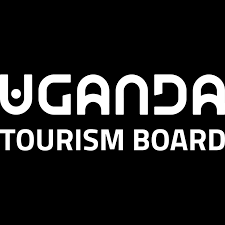Combine Gorilla Trekking With A Tanzania Safari
Imagine lions lazing in golden grass, elephants marching across the horizon, and wildebeest by the million thundering through rivers in their timeless migration.
Days later, the scene changes. Mist clings to the slopes of Uganda’s or Rwanda’s mountains, and deep within the forest, a family of gorillas appears. You lock eyes with a silverback, and for a heartbeat, the distance between human and wild simply disappears. This rare combination—the epic scale of Tanzania’s savannahs and the close-up encounter with wild gorillas on gorilla trekking adventures—is what makes East Africa unlike anywhere else. Two completely different adventures, yet easily combined in one seamless journey. More and more travellers are choosing to do both.
This guide will show you how to make it possible: clear, simple advice to help you travel smoothly between countries, maximise your time, and experience the very best of Africa’s wildlife.
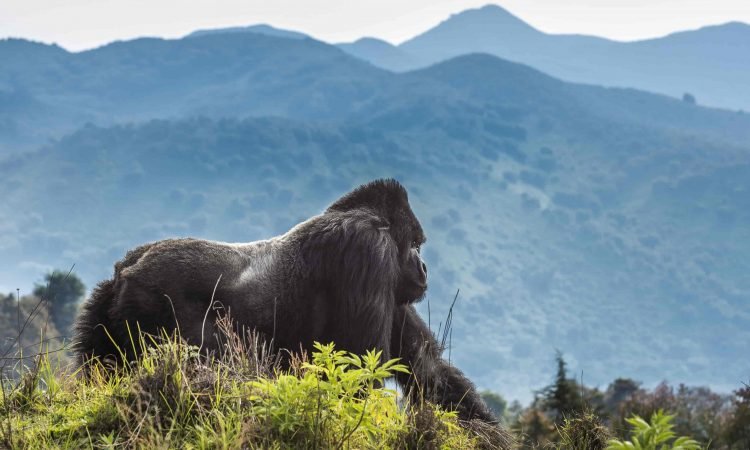
Best Time to Combine
Timing is crucial when planning a trip that combines gorilla trekking with a Tanzanian safari.
Fortunately, there is a significant overlap in favourable conditions for both experiences, making it possible to enjoy them in a single journey.
For gorilla trekking in Uganda and Rwanda, the prime seasons are during the drier months of the year. The short dry season from December to February and the long dry season from June to September offer the best conditions for trekking through the forests and encountering gorillas in their natural habitat. Tanzania’s safari seasons align well with these windows.
From June to October, the dry months provide excellent wildlife viewing across the Serengeti, Ngorongoro, and other national parks. The period from December to March is also favorable, particularly for witnessing wildebeest calving in the southern Serengeti.
The period from June to September is especially ideal for combining both adventures.
During these months, the forests of Uganda and Rwanda remain dry enough for comfortable gorilla trekking, while Tanzania enjoys peak safari conditions.
This is also when the Great Wildebeest Migration reaches the northern Serengeti, creating one of the most spectacular wildlife events on Earth, including the dramatic river crossings.
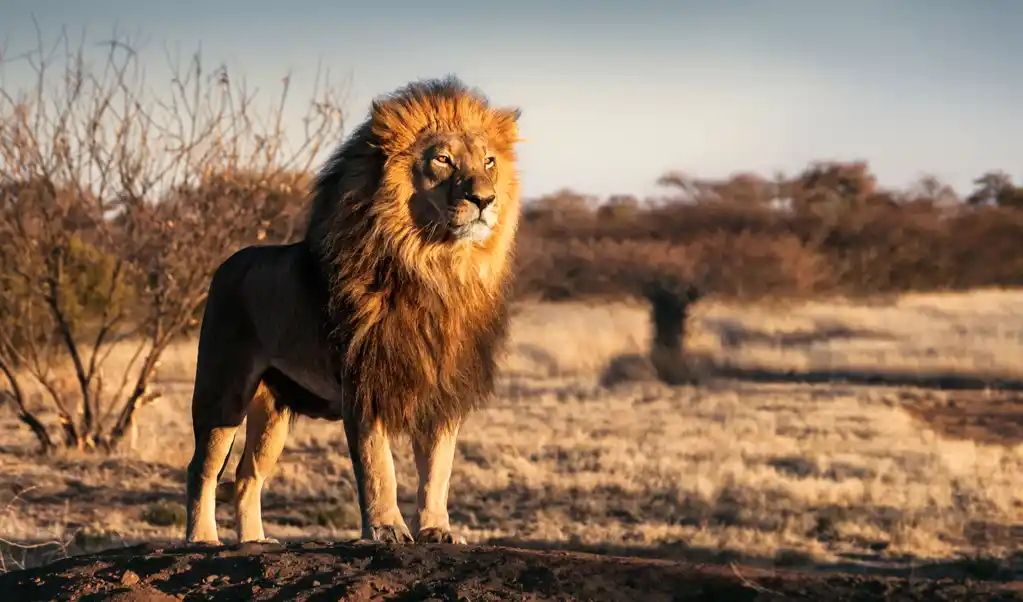
Logistics: Planning and Booking
Gorilla Permits
A gorilla permit is essential for trekking and spending time with mountain gorilla families.
These permits are limited and highly sought after, so securing them early is crucial. As of 2025, permits in Uganda cost US$800 per person, while permits in Rwanda are higher, at US$1,500.
Because of their limited availability, gorilla permits can sell out months in advance, particularly during peak travel seasons. It is strongly recommended to book your permits as early as possible and confirm availability for your intended dates before finalizing flights or accommodations.
Early planning ensures you won’t miss out on this once-in-a-lifetime experience.
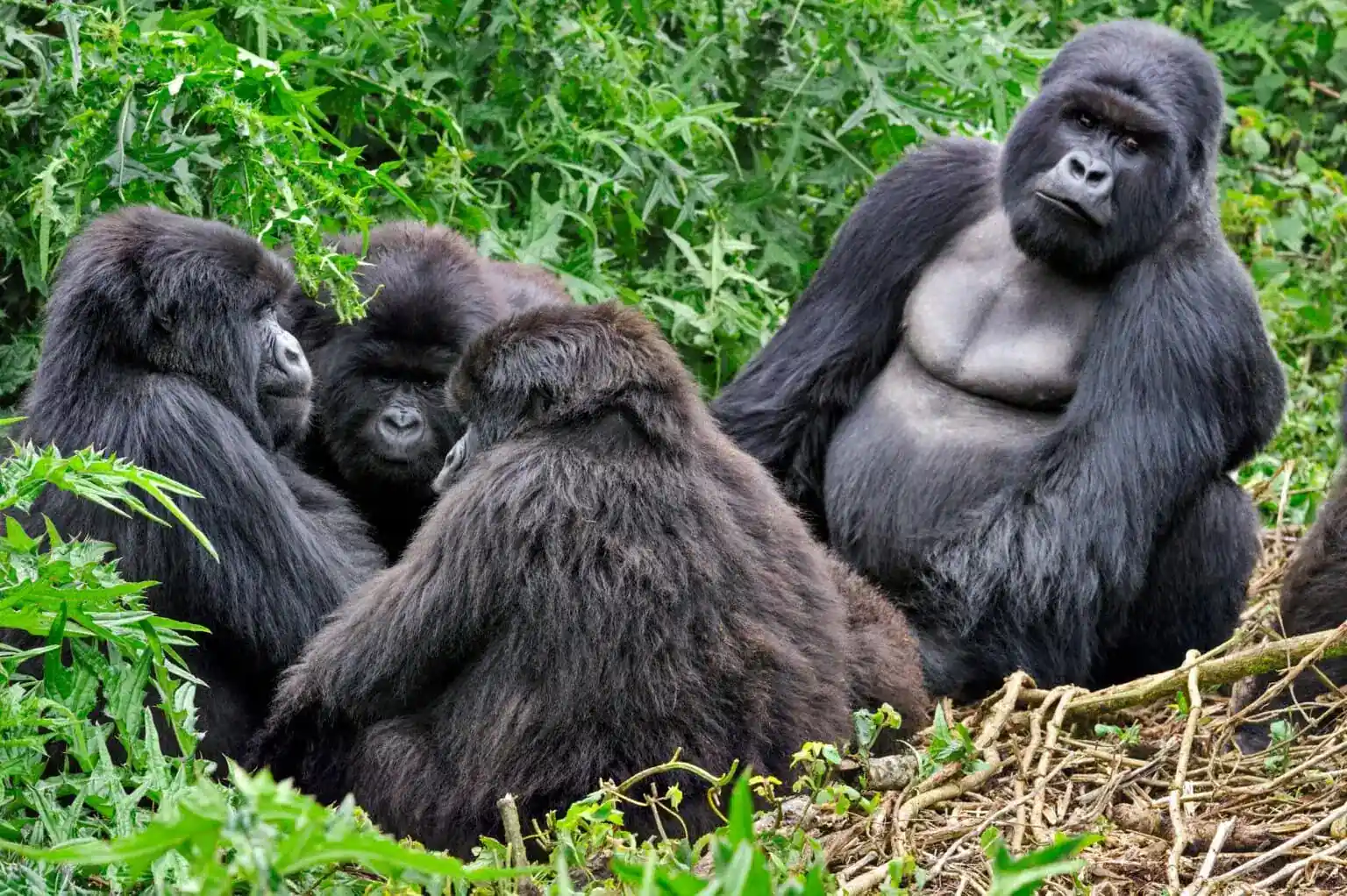
Travel Documentation and Health Requirements
Visas: Most international travellers will need a tourist visa to enter Uganda, Rwanda, and Tanzania.
Uganda visa must be applied for online before travel while Rwanda and Tanzania visa can be obtained electronically or on arrival. It is essential to confirm the visa requirements well in advance to avoid delays at border crossings.
Vaccinations: A Yellow Fever vaccination is mandatory for travellers moving between these countries. For example, if you enter Tanzania via Kenya, Rwanda, Uganda, or Ethiopia, you must present a valid Yellow Fever card.
It is also recommended to check with a travel clinic for the latest guidance on other vaccinations, which may include hepatitis A and B, typhoid, and tetanus.
Health precautions. Both gorilla trekking areas and parts of Tanzania carry a risk of malaria. Travellers should consult a doctor or a qualified travel clinic for advice on malaria prevention, including prophylaxis and mosquito protection.
Transportation Between Countries
Flying is the most efficient and practical way to travel between gorilla trekking destinations and Tanzania’s safari regions.
Direct flights connect Rwanda’s Kigali International Airport and Uganda’s Entebbe International Airport with several key airports in Tanzania, making it easy to combine both experiences in one trip.
Popular routes include flights from Kigali to Kilimanjaro International Airport or Dar es Salaam, as well as flights from Entebbe to the same Tanzanian destinations.
There are also limited direct flights from Kigali to airstrips within the Serengeti, providing a faster connection to the heart of the safari.
Using these flight options allows travellers to minimise long overland transfers and maximise time in the parks and forests, making it far easier to enjoy both gorilla trekking and a classic Tanzanian safari in a single itinerary.
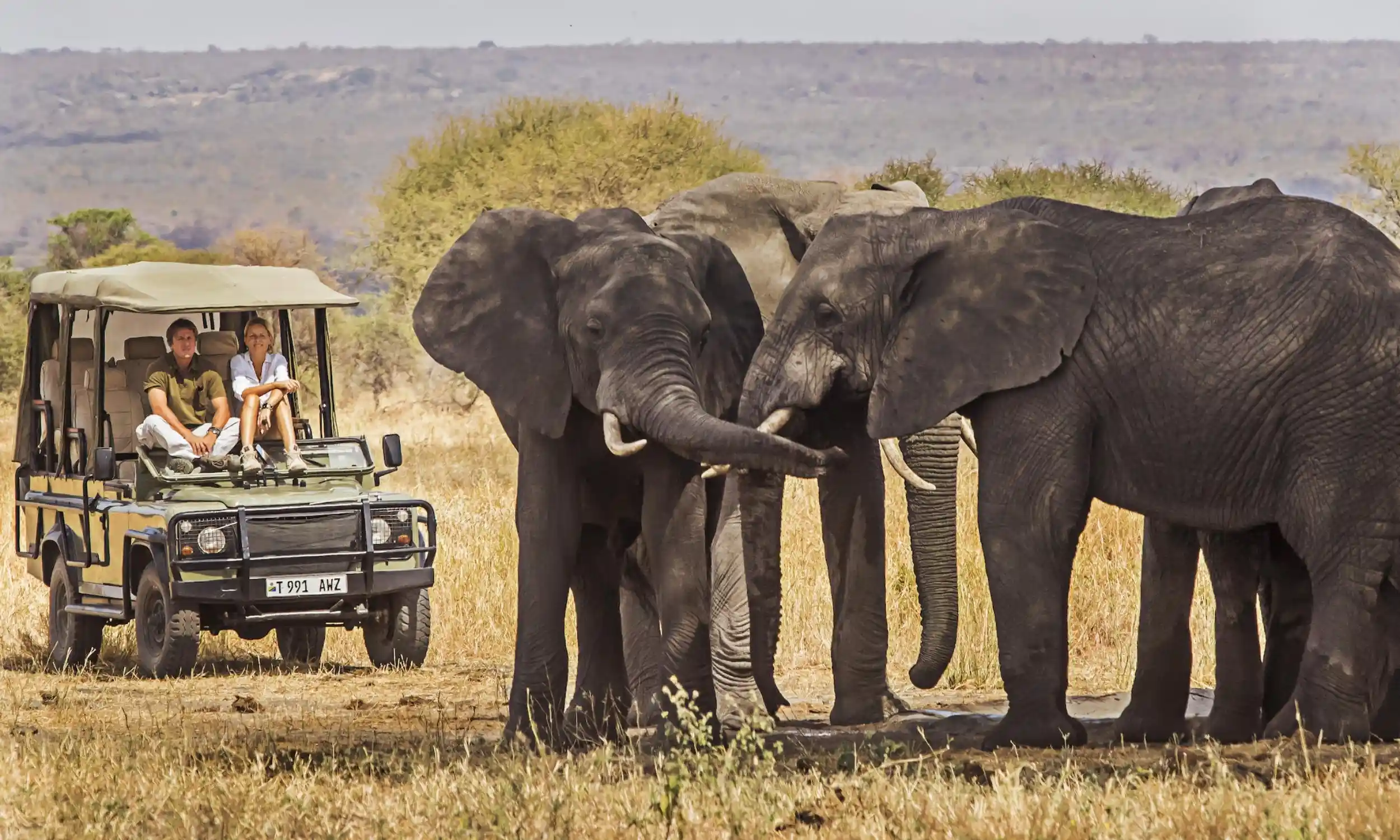
Uganda vs Rwanda When Combining with Tanzania
Both Uganda and Rwanda offer extraordinary gorilla trekking experiences, but several factors may influence your choice when combining a gorilla trek with a Tanzanian safari.
Uganda Gorilla Trekking
Pros:
- More affordable permits (US$800 compared to Rwanda’s US$1,500)
- Access to multiple gorilla families across different sectors of Bwindi Impenetrable Forest
- Additional wildlife experiences, such as chimpanzee trekking in Kibale National Park
Cons:
- Treks are typically longer and more challenging through dense forest
- Slightly more remote location when connecting to Tanzania
- Often requires an overnight stay in Entebbe before flying to Tanzania
Rwanda Gorilla Trekking
Pros:
- Easier trekking conditions in Volcanoes National Park
- More accessible location, just 2–3 hours from Kigali
- A wider selection of luxury accommodation options
Cons:
- Higher permit costs
- Smaller forest area with potentially more visitors
Choosing between Uganda and Rwanda largely depends on your priorities: whether you value affordability, variety, and adventure, or accessibility, comfort, and easier treks.
Both destinations pair beautifully with a Tanzanian safari, offering a journey that combines the grandeur of the savannah with the unforgettable encounter of gorilla trekking.
You may also like; Uganda Vs Rwanda Gorilla Trekking
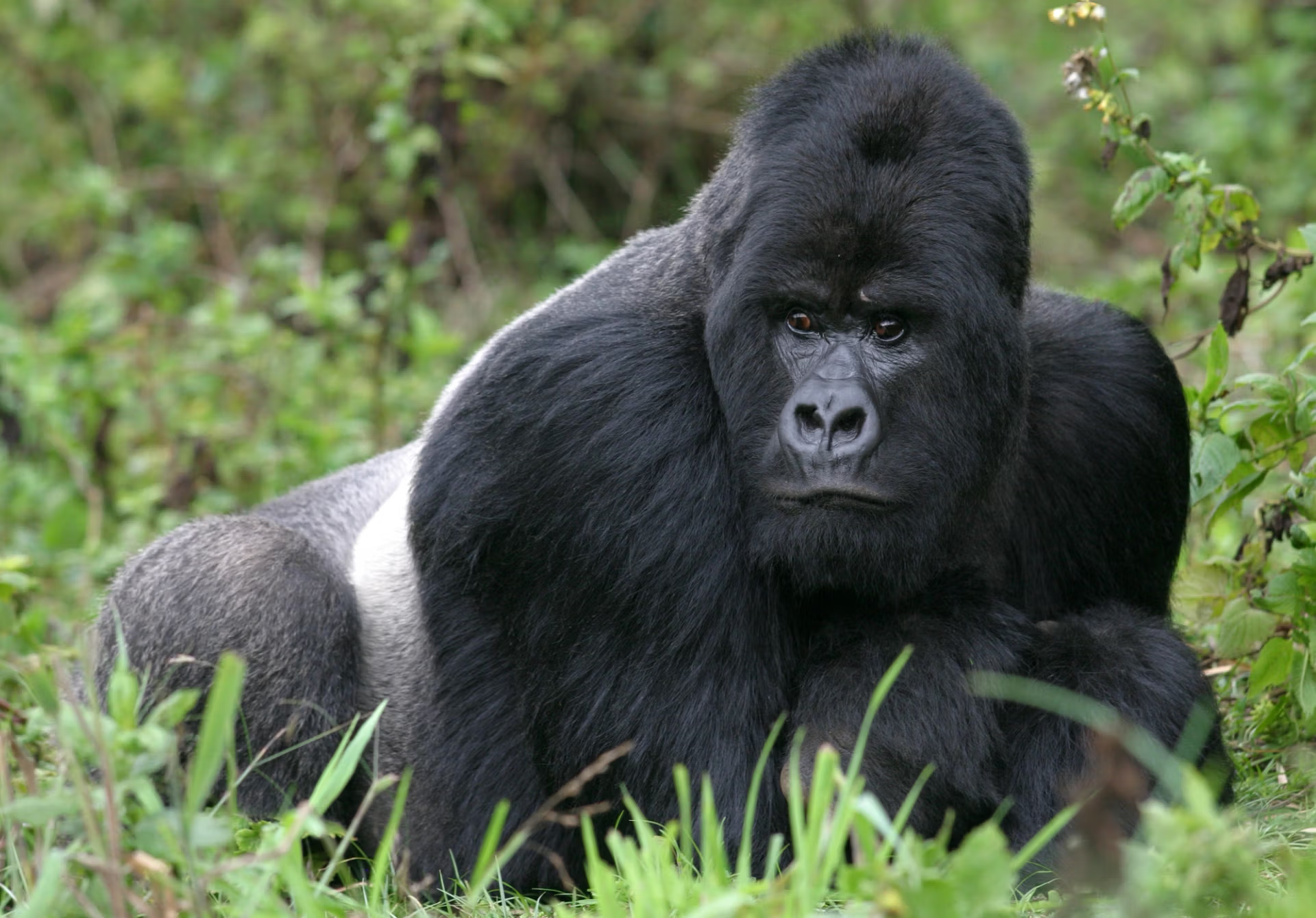
Great Wildebeest Migration vs Hidden Gems
The Great Wildebeest Migration, known as the “Greatest Show on Earth,” is a spectacular wildlife event involving over 1.5 million wildebeest, along with hundreds of thousands of zebras and gazelles, moving in a clockwise pattern across the Serengeti-Mara ecosystem. The timing of the migration depends on the rains, generally following this pattern:
- December to March: Herds gather in the southern Serengeti plains and Ngorongoro Conservation Area for calving season.
- April to June: Movement toward the central and western Serengeti.
- July to October: Northern Serengeti and Mara River crossings—the most dramatic and photographed phase.
- November: Herds return south as the short rains begin.
While the Serengeti is Tanzania’s most famous park, the country also has hidden gems that are perfect for combining with a gorilla trekking safari:
- Tarangire National Park: Known for large elephant herds and towering baobabs, especially rewarding during the dry season.
- Nyerere National Park (formerly Selous): Africa’s largest game reserve, offering boat safaris along the Rufiji River and diverse wildlife.
- Ruaha National Park: One of Tanzania’s wildest parks, with excellent predator sightings and far fewer tourists.
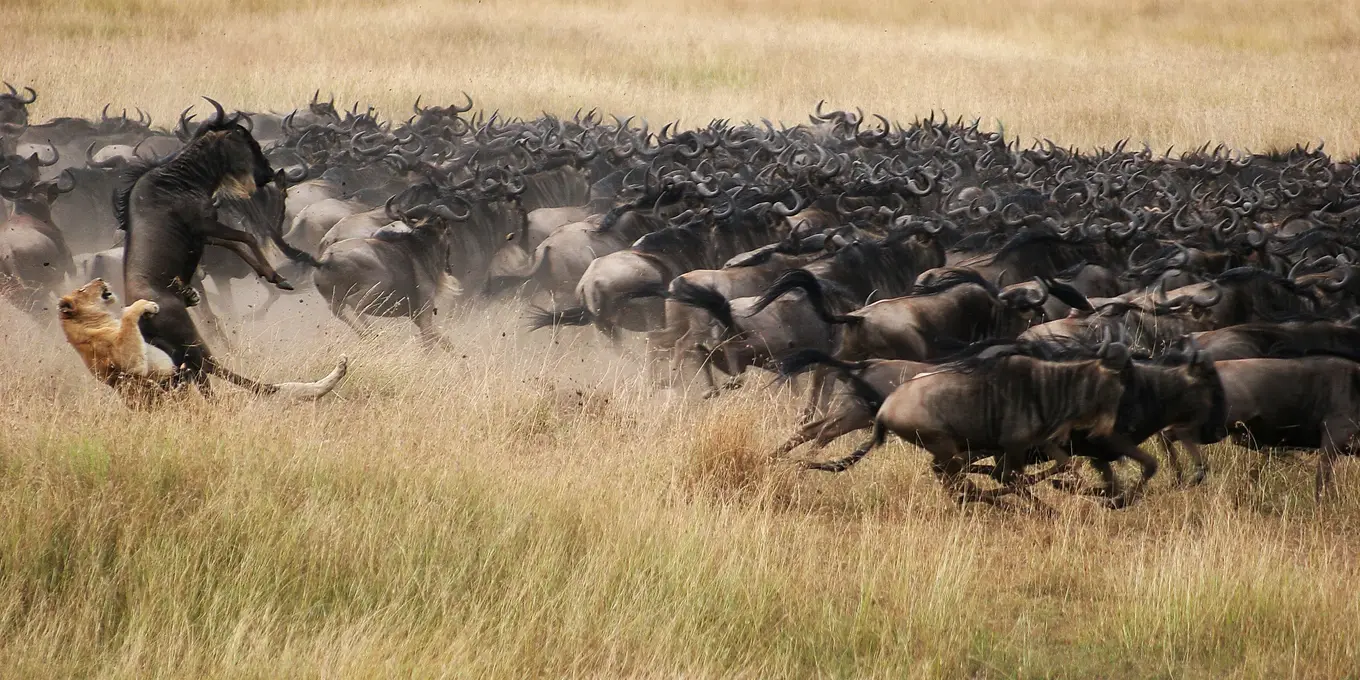
How to Travel Between Each Country
Flying:
Air travel is the fastest and most convenient way to combine gorilla trekking with a Tanzanian safari.
Several airlines, including scheduled carriers and charter services, operate between major hubs in Rwanda, Uganda, and Tanzania, making it easy to move quickly and comfortably between destinations.
Direct flights connect Kigali and Entebbe with Kilimanjaro, Dar es Salaam, and, in some cases, even Serengeti airstrips, helping travellers maximise time on safari and in the forests.
Road Travel:
Although overland travel between gorilla trekking areas and Tanzanian safari parks is possible, it is generally impractical for most travellers.
The distances are long, roads can be rough, and border crossings add complexity. For example, the journey from Kigali to the Serengeti spans roughly 592 miles (about 950 km) and can take more than 16 hours of driving, making flying the far more efficient and comfortable choice.
In What Order Should You Do This?
For most travellers, the ideal sequence is to start with gorilla trekking and follow with a safari.
Gorilla trekking is physically demanding, requiring long hikes through dense forest, so it’s best tackled when you are fresh and rested.
After the exertion of trekking, the slower, more relaxed pace of a safari provides the perfect contrast, allowing you to unwind while still experiencing Africa’s incredible wildlife.
Typically, two to three days are sufficient for gorilla trekking, followed by four to five days exploring Tanzania’s safari parks. If your schedule allows, consider a rest day between the two experiences to recharge before moving from the forests to the open savannah.
To round off your journey, you might even include a few days on Zanzibar for beaches and relaxation, creating a perfectly balanced East African adventure.
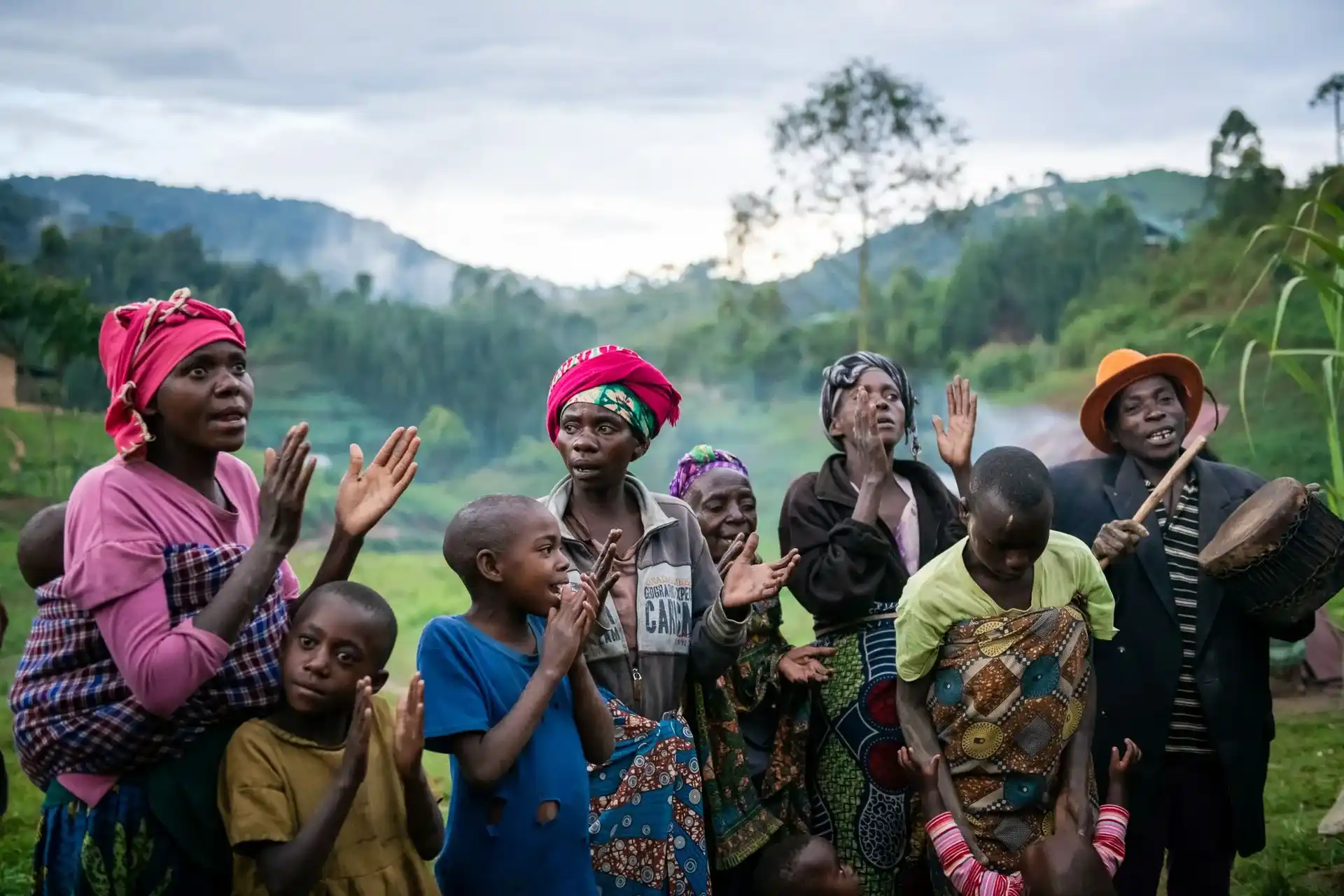
Conservation and Responsible Tourism
Both gorilla trekking and Tanzanian safaris play vital roles in supporting conservation across East Africa, ensuring that these incredible ecosystems and their wildlife are preserved for generations to come.
Supporting Gorilla Conservation Through Tourism
In Uganda and Rwanda, a large portion of gorilla permit fees goes directly toward conservation.
Roughly 15% supports government initiatives, 10% benefits local communities, and 75% is dedicated to gorilla conservation programs.
These funds help maintain anti-poaching patrols, monitor gorilla families, protect and expand habitats, and support community development projects that encourage coexistence between people and wildlife.
Conservation Success in Tanzania
Tanzania’s national parks operate on a similar model, where tourism revenue is reinvested into conservation efforts.
This approach not only protects wildlife and habitats but also provides economic benefits to surrounding communities, creating a sustainable relationship between tourism and conservation.
Being a Responsible Traveller
As a visitor, you can make a meaningful impact by:
- Choosing reputable safari operators and lodges with strong conservation credentials
- Following wildlife viewing guidelines, especially strict gorilla trekking protocols
- Supporting community-based tourism initiatives
- Minimising your environmental footprint through conscious choices, from waste reduction to energy and water conservation
Budgeting for Your Epic Adventure
Combining gorilla trekking with a Tanzania safari is a once-in-a-lifetime experience, and while it represents a significant investment, careful planning can help manage costs and make the journey more accessible.
Major Expenses
Gorilla Permits
- Uganda: US$800 per person
- Rwanda: US$1,500 per person
Safari Costs
- Park fees: Typically, US$50–80 per day in Tanzania
- Accommodation: Ranges from around US$150 per night for budget lodges to over US$1,000 per night for luxury safari lodges
- Transportation: Includes flights, transfers, and safari vehicles
- Professional guides: Essential for expert wildlife viewing and an enriched experience
International and Regional Flights
- International flights: To East Africa from your home country
- Regional connections: Between Uganda, Rwanda, and Tanzania
- Bush flights: Short flights to Serengeti airstrips for faster access to safari zones
Additional Expenses
- Visas: US$50–100 per country, depending on nationality
- Travel insurance: Strongly recommended for peace of mind
- Gratuities: Around US$10–20 per day for guides, US$5–10 for other staff
- Porter fees for gorilla trekking: Approximately US$15–20

Cost-Saving Strategies
Combining gorilla trekking with a Tanzanian safari is one of the ultimate wildlife experiences in East Africa, but careful planning can help manage costs. Consider these strategies:
- Travel during shoulder seasons, such as April–May or November, when pricing for accommodation, and flights is more attractive.
- Opt for Uganda gorilla trekking, which has lower permit costs compared to Rwanda, when pairing it with a Tanzania safari.
- Choose mid-range accommodations that offer comfort and convenience without the premium price tag of luxury lodges.
- Limit internal flights where possible by planning efficient routes between gorilla trekking destinations and safari parks.
Though combining these adventures can be logistically complex, the rewards are extraordinary: the quiet majesty of mountain gorillas in their misty forest homes and the sweeping drama of Tanzania’s Serengeti plains create a journey that is truly unforgettable.
Ready to plan your ultimate East African adventure? Contact our expert team to design a bespoke itinerary, perfectly tailored to combine gorilla trekking and safari into one seamless, once-in-a-lifetime experience
Suggested Itineraries
Our Trusted Partners
